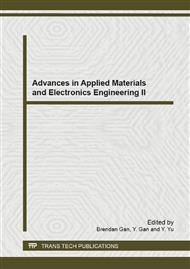p.168
p.172
p.177
p.182
p.189
p.194
p.198
p.203
p.207
A Study on Hydrogen Sulphide as Potential Tracer in Landfill Gas Monitoring
Abstract:
Municipal solid waste (MSW) landfills are one of the major source of hydrogen sulphide (H2S) which is the offensive odours potentially creating annoyance in adjacent communities. This project focuses on H2S emission from landfills in Perlis, Malaysia. Landfill gas (LFG) samples were collected and analyzed accordance with NIOSH method 6013. The mean concentrations of H2S in Kuala Perlis Landfill and Padang Siding Landfill are 210.68 ppm and 242.85 ppm respectively. High concentrations of H2S may be a concern for employees working on the landfill site. These results indicate that workers should use proper personal protection at landfill when involved in excavation, landfill gas collection, and refuse compaction. The formation of H2S most likely to be contributed by the biological conversion of sulfate from gypsum-rich soils and landfill wastewater treatment sludges by sulfate-reducing bacteria (SRB) which can utilize dissolved sulfate as an electron acceptor. H2S is conveniently detected by hand held analyzer, such Jerome meter, landfill gas analyzer. In the organic range, in the ease of detection range in the dispersion rate within the landfill site, the monitored H2S gas form a very noticeable concentration with the travelling wind direction. It proved that the dispersion rate of H2S are suitable as tracer to detect route of travelling in a certain distance.
Info:
Periodical:
Pages:
189-193
Citation:
Online since:
April 2013
Keywords:
Price:
Сopyright:
© 2013 Trans Tech Publications Ltd. All Rights Reserved
Share:
Citation:


